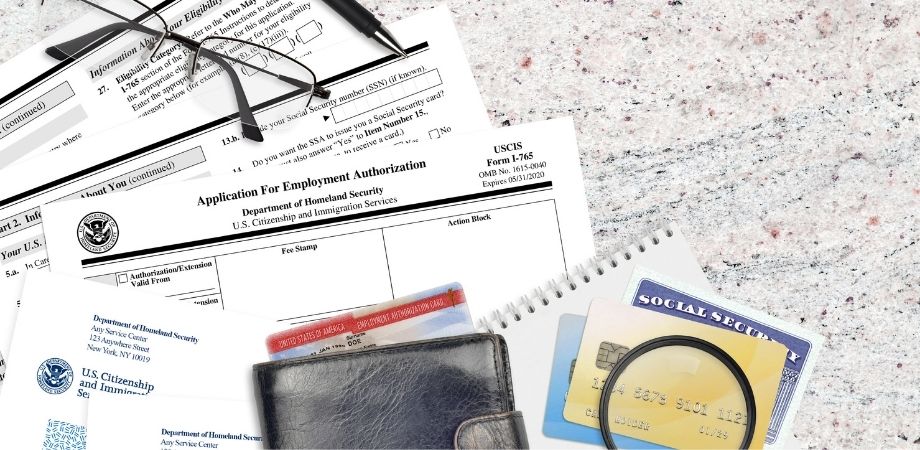If you’re planning to submit immigration documents to the United States Citizenship and Immigration Services (USCIS), it’s important to understand the translation guidelines set forth by the USCIS. The accuracy and compliance of your translations can have a significant impact on the success of your immigration process.
In this article, we will walk you through the USCIS translation requirements, explain the importance of accurate translations, define certified translations, help you select a qualified translation service, and provide a step-by-step guide to translating your documents for the USCIS. We will also cover tips for ensuring compliance with USCIS translation guidelines and how to handle denials and resubmissions.
Whether you are an aspiring immigrant or a legal professional assisting clients with immigration matters, this comprehensive resource will provide you with the knowledge and guidance necessary to successfully navigate USCIS translation requirements.
What is the definition of USCIS?

The United States Citizenship and Immigration Services (USCIS) is a key government agency responsible for overseeing immigration to the United States. This agency plays a critical role in managing the legal and procedural aspects of immigration, including processing applications for citizenship, permanent residence, and various types of visas. USCIS’s mission is to ensure the integrity and fairness of the immigration process, facilitating the lawful entry of prospective immigrants while protecting national security and honoring American values.
What are the USCIS translation requirements?
When applying to the United States Citizenship and Immigration Services (USCIS) to live, work, or study in the United States, applicants are required to submit various documents. These include, but are not limited to, birth certificates, marriage or divorce certificates, death certificates, academic degrees, police records, passports, and affidavits. Any document submitted in a foreign language must be accompanied by a certified translation into English. This means that any foreign language document included in your USCIS application must be accurately translated and certified.
Failure to fully understand and comply with USCIS translation requirements can result in significant delays in the application process. Ignoring these requirements during the translation process or submitting documents that do not meet these criteria can negatively impact the outcome of your application. It is imperative that foreign language documents submitted to USCIS be accompanied by an English translation certified as complete and accurate by the translator, along with a certification attesting to the translator’s competence to translate from the source language into English.
USCIS requires that all foreign language documents be accompanied by certified translations to ensure that all relevant information is properly understood and evaluated. This requirement is critical to maintaining the integrity of the application process and ensuring fairness for all applicants. By setting standards for translation, USCIS addresses common challenges and establishes specific criteria for document types, facilitating a smoother and more reliable immigration process.
Who Can Translate Legal Documents for USCIS?
When translating legal documents for USCIS, it is crucial to use translators who are qualified and experienced in legal translation. USCIS does not provide a list of approved translators, but they expect translations to be accurate and complete. Here are some options for finding qualified translators:
- Hire a professional translation agency: Look for translation agencies specializing in legal translations and ensure they have experience in providing USCIS translations. These agencies often have a team of qualified translators who are well-versed in the requirements of USCIS.
- Seek recommendations: Ask for recommendations from friends, colleagues, or fellow immigrants who have successfully submitted USCIS translations. They can provide insights into their experiences with translators and recommend reliable professionals.
- Utilize online platforms: Online platforms such as ProZ and TranslatorsCafe allow you to search for translators with expertise in legal translations. Look for translators who mention USCIS translations in their profiles and have positive reviews from previous clients.
Remember to verify the qualifications and credentials of any translator you choose to work with. Request samples of their previous work, check their certifications, and consider conducting a small test translation to assess their skills and accuracy.
What are the USCIS translation steps?
The process of translating documents for the United States Citizenship and Immigration Services (USCIS) involves several important steps. These steps ensure that the translations meet the language requirements set by the USCIS. It is crucial to follow these steps accurately to avoid any delays or complications with your immigration application. Here are the key USCIS translation steps:
- Gather the necessary documents: Collect all the documents that need to be translated, such as birth certificates, marriage certificates, academic transcripts, and any other relevant records.
- Find a qualified translator: Look for a professional translator who is experienced in translating legal documents and has a good understanding of the USCIS requirements.
- Ensure accuracy and completeness: The translator should thoroughly and accurately translate all the information on the documents, including names, dates, and any other details.
- Certify the translation: The translator must provide a certification stating that the translation is accurate and complete to the best of their knowledge and abilities.
- Include translator’s information: The translator’s contact information, including their full name, address, and signature, should be included in the translation.
- Create a cover letter: Prepare a cover letter explaining the purpose of the translation and providing any additional information or context that might be necessary.
Format for USCIS Certified Translation
When preparing a certified translation for USCIS, it is crucial to adhere to specific formatting guidelines. These guidelines ensure that the document meets the requirements and is easily understandable by the USCIS officers reviewing the application.
Here are some key formatting guidelines to follow:
- Use a professional format: The translation should be typed and printed neatly, using a professional font like Arial or Times New Roman. Handwritten or illegible translations may not be accepted.
- Include a header: At the top of each translated page, include a header that clearly states “Certified Translation” in bold. This helps distinguish the translated document from the original.
- Maintain the original layout: Ensure that the translated document mirrors the original document’s layout, including headings, paragraphs, and bullet points. This helps USCIS officers locate information easily.
- Provide accurate pagination: Number each page of the translation, including the cover page, in the lower right corner. Use the format “Page X of Y” (e.g., “Page 1 of 5”).
- Translate all content: Make sure to translate all the content on the original document, including headers, footers, stamps, seals, and signatures. If a particular section is not applicable, include a note stating so.
- Include a certification statement: At the end of the translation, include a certification statement signed by the translator, attesting to the accuracy and completeness of the translation. Include contact information for the translator, such as their name, address, phone number, and email address.
By following these formatting guidelines, you can ensure that your certified translation for USCIS meets the necessary requirements and facilitates a smoother review process. Remember, accuracy, completeness, and legibility are key factors in preparing a successful translation for USCIS.
What are the Common Mistakes in USCIS Translations?
Navigating the complexities of United States Citizenship and Immigration Services (USCIS) applications can be daunting, particularly when it comes to the translation of essential documents. Ensuring that all foreign-language documents are accurately translated into English is not just a requirement; it’s a critical step in the application process that demands meticulous attention to detail. However, applicants often encounter pitfalls that can lead to unnecessary delays or adverse decisions on their applications. Here are some of the most common mistakes made during the USCIS translation process:
- Non-Certified Translations
- Incomplete Translations
- Using Unqualified Translators
- Misunderstanding the Source Document
- Not Following Specific USCIS Requirements
- Lack of Quality Control
Avoiding these common mistakes requires a careful approach to the translation process, including selecting qualified professionals for translation tasks and thoroughly reviewing all translated documents before submission. By paying close attention to the details and ensuring that all translations meet USCIS standards, applicants can avoid unnecessary complications and move forward more confidently in their immigration journey.
Does USCIS Need the Translation to be Notarized?
No, the USCIS does not require translations to be notarized. While the translations need to be certified for accuracy, they do not need to be notarized. The certification provided by the translator, along with their contact information and signature, is sufficient to meet USCIS requirements. Notarization is often not necessary unless specifically requested by the USCIS or if there are additional legal requirements in the target country.



